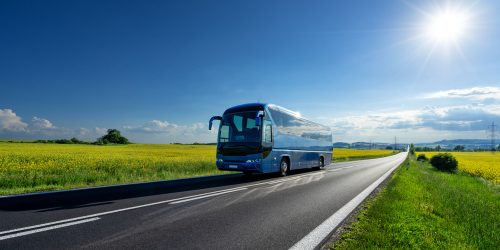
Windscreen manufacturing process
- Ogólne
Laminated windscreens go through a process at our factory that involves cutting, bending, laminating, autoclaving, and final inspection.
The production of windscreens begins with careful selection of raw materials. We use high-quality materials that ensure the product’s durability and safety. The raw glass must be optically clear and flawless to meet strict quality requirements. Finn Lamex is ISO 19001 certified, which demonstrates our commitment to quality and customer focus. We maintain and monitor the quality of our windscreens at every stage of production, and we reject any glass that does not meet our quality standards.
Glass cutting
In the cutting process, we cut the raw glass to the desired shape and ground edges of the glass. During the cutting process, the glass is washed and dusted to prevent the glass pairs from sticking together during the bending phase. After cutting, most glasses are silk-printed.
Silk screen printing is resistant to UV light, abrasion and solvents. It is used to protect the glue on the edges of glass from the effects of the sun.

Bending the glass
After cutting and silk-printing, the windscreens are bent in an bending furnace at approximately 600 degrees celsius to the customer’s desired shape. Finn Lamex offers a maximum windscreen size of 3200 x 2500 mm, and we are able to bend windscreens to 700 mm deep.
The windscreen bending process required special expertise and knowledge, and we are known for this expertise in the industry.

Lamination
In the next step, the windscreen is laminated. In lamination process, a PVB film is placed between the two bended glasses, acting as a binder. In an accident situation, a laminated windscreen will crack but not shatter. Nowadays, windscreens must be laminated by law.
We offer PVB films in different color, such as clear, Solar Control, and color-striped. We also offer the possibility of heated windscreens.

Autoclaving
After lamination, the windscreen is treated in an autoclave at high temperature and pressure. The glasses are kept in the autoclave for a specific time to ensure that the heat and pressure are evenly distributed. This step ensures that the glass and PVB film form a unified structure. We monitor the quality of each autoclaving process using the test samples.
The autoclave heats up to 150 degrees celcius and a pressure of 10 bar turning the PVB film into transparent glue which results in laminated safety glass.

Quality control and packaging
After autoclaving, the customer’s desired additional featured are installed on the windscreen. After this, each windscreen goes through a strict quality control process before being delivered to customers.
The finished windscreens are carefully packaged and delivered to the customer after a strict quality control process.

Conclusion
The manufacturing process of laminated windscreens involves a combination of advanced technology and skilled craftmanship. From cutting and bending to lamination and through final quality control, every step is designed to produce safe, durable, and high-performance windscreen that meets the strict deamands of the automotive industry. The integration of quality materials and innovative processes ensures that the final product provides not only durability but also enhanced safety for both drivers and passengers.



